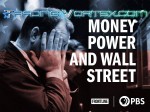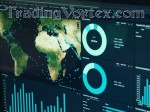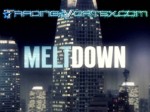Video Transcription:
Volatility and Viruses | The Big Conversation | Refinitiv
ROGER HIRST: Volatility has been under pressure across all the main assets. The type of volatility environment will help frame how markets might react to the Coronavirus outbreak. Will this year be another year like 2017, or is this the calm before the storm? That's the big conversation. The type of investment environment is often defined by the volatility environment that prevails at the time. The last three years have seen three volatility environments for the equity market. 2017 was one of extremely low volatility, with the VIX averaging around about eleven for the full year. Reflation was still in full swing with a globally coordinated growth spurt. Also putting the US dollar on the back foot and this further helped risk assets which ground higher with very few pullbacks of significance on the S&P 500. 2018 was the year in which the Fed tried to normalize policy and make a break from its central bank peers. This was the year in which we had two significant spikes in volatility as markets expressed their displeasure about the Fed trying to break the shackles of low growth and liquidity dependence. That year is also the year that begun the trade war and a turn for the worse in the global growth momentum. 2019 was the year in which the central banks tried to reassert their control over the markets and return to the provision of liquidity. Firstly, the Fed was forced into a retreat by accelerated declines in the US equities at the very end of 2018 2019 started with a full relent and resolved to dial back some of the tightening. The ECB also tried to end its own QE, but due to the rapid decline in bond yields and in particular the decline in German bunds to minus 70 basis points, Draghi felt compelled to restart QE. So what should we expect for 2020? Well, firstly, as we've noted in the last few weeks, the US market has been defined by the application of excess liquidity to smooth over the repo operations around the turn of the year. And this has clearly been the key driver of equity performance. Now, whilst last week's S&P 500 performance may have been influenced by concerns about the coronavirus outbreak in China, it is also a week in which the Fed drained liquidity from the market. And this time, just like in November, the equity market had a negative week on week return. But we should probably consider that the Fed put is actually a cap, and that's a cap on volatility, which then translates into a put on both the equity and the bond markets. But whilst we've largely focused on the efforts of the Fed, it is perhaps the People's Bank of China, which has had the greatest incremental impact on global markets. It was their injections in early 2016 that helped the commodity markets regain their mojo after the dollar induced declines of 2014 and 2015. The change in Chinese credit appears to have been influencing volatility as well. When the PBoC has been increasingly liquidity, the VIX has generally been trending down (when viewed on a year on year change) and volatility has generally been pushed higher when they stepped away. So, many observers now think that the PBoC is starting to increase its credit injections again, and this was even before the outbreak of coronavirus. If that's the case, then this should be another reason to expect that volatility will remain subdued during 2020. And additionally, if U.S. CPI that's inflation stays close to the 2 percent level, then this should also help keep a lid on volatility. The investment bank Soc Gen has shown that the S&P 500 6 month realized volatility, that’s actual or historical volatility tends towards its lows when U.S. CPI is in a two to three percent range. This is why the short term risks will largely depend upon the actions of the Fed and whether it chooses to reverse some of those recent repo operations. The recent comments by Dallas Fed Governor Kaplan, who's a 2020 voting member, that “the balance sheet is not free. There is a cost to it”, well that suggests that the Fed may be inclined to give back some of the recent gains in equity prices in an attempt to normalize their abnormal operations of the last month. And these operations were themselves abnormal by the standards of their historically abnormal accommodation. But as we've seen time and time again, if they attempt to withdraw liquidity and then this turns into an equity rout, then everything that we've seen over the last few years suggests they will not hang about in attempting to stabilize markets again. The tolerance threshold has been getting shorter and shorter, even becoming pre-emptive. And not only have the actions of the central bank's been putting a cap on equity volatility, but they've also been particularly successful in pushing down currency and bond volatility. The CVIX, this is the Deutsche Bank Currency Volatility Index, has recently plunged back under five, a level which has only seen a couple of times over the last 20 years. With all central banks trying to debase their own currency, no central bank has actually succeeded in this relative game. Apart from a few outliers, most of the major currencies have been drifting through ranges. Bond volatility, ss measured by the MOVE index also recently returned towards the bottom end of a range. If we're looking for significant rebasing of volatility, then it's the bond market where the permanent turn higher is likely to appear first, as opposed to the short, sharp bursts which have frequented the equity market. And it briefly looked like this was the case in 2019, but the repo operations quickly capped that midyear surge. So how tolerant will central banks be towards higher yields and steeper yield curves? Given that the global stock of debt has just reached another new all time high as a percentage of global GDP at around about 322 percent, global economies will be supersensitive to high yields. It only required the US 10-Year yields to hit three 3.24% in late 2018 to destabilise risk assets, though the Fed's December rate hike of that year, was with hindsight the monumental miscalculation which they are now very unlikely to repeat. What we would need to watch out for is a repeat of late 2017 and early 2018, where yields were rising, as was implied equity volatility, which eventually triggered the short, sharp sell off in February of that year and the explosion vol-of-vol. With U.S. 10-Year yields currently stuck in the 160 to 200 range when this was recorded on Monday, there will still be plenty of warning before we have to worry about that eventuality. The environment of low structural volatility still looks to be intact. More like 2017, with yields currently heading lower in response to events in China. However, that said, I would still be looking at short dated put options even in the absence of these events from China. Purely a cyclical play at this stage, given the dynamics of an overbought market, with results seasons coming to its peak this week and a Fed that appears to be taking its foot off the accelerator, unless this outbreak escalates (and more on that in the Whisper segment later). The next major US expiry is February the 21st. They're always on the third Friday of each month. And this would be a good way to play for the markets round trip, which often takes place in the first quarter of every year where they either go up and down or down and up about the same amount. But if you can afford to bleed a little bit more premium, then the bigger quarterly expiry of March the 20th would be preferable in order to buy some near the money index puts or replacing some stock positions with calls and then holding cash (this is called stock replacement) as basic a way of reducing risk after what has been a very remarkable central bank induced run up of over 16 percent since mid-September of 2019. In the last segment I was waxing on about the potential for the persistence of a low volatility environment based on the re-emergence of the PBoC and a lack of appetite that any of the central banks have for a prolonged period of uncertainty or volatility. But what if that analysis is completely wrong and structural as opposed to cyclical implosion that many believe is now well overdue is indeed actually imminent? What sort of trades can we look at? Apart from the obvious ones of selling everything and then hoping for the best? But a couple of areas which consistently appear on the radar are potential reversals in credit markets, the credit agencies themselves, and also a reversal in momentum of passive investing, which no doubt will be looked upon with the benefit of hindsight as one of the real bubbles of this era. First, are any of these at extremes? We've documented in the past the growth of the triple-B market, which now accounts for about half of the pile of US investment grade corporate bonds. So the credit market is at risk. And again, I would stress the general thinking here is that we will either grind on, in the same vein that we have seen for the last few years, or they are going to collapse. Well, then the credit companies themselves, the very ones who are the epicentre of 2008 financial crisis, would again be vulnerable. Moody's has been a star performer over the last decade. It has performed twice as well as the tech heavy Nasdaq and has been particularly impressive since the lows of 2019, gaining in excess of 30 percent over that time. The explosion in volumes and derivatives being pushed onto the books of clearinghouses and away from investment banks, plus, the huge rise in corporate debt have been a couple of the tailwinds for the stock. And although there's no reason to think that the framework is about to suddenly change, if it did, then it should be expected that these types of stocks, which have been at the core of the structural shift, would be some of the worst performers if that framework were undermined. In terms of passive investments, the obvious winners have been the investment managers who have championed the creation of passive funds an ETF. But companies such as MSCI have championed the whole framework of indexation. This can be seen again in the performance of the stock, which has gained 700 percent in the last 10 years, again, about double that of the Nasdaq. These stocks are therefore commanding quite impressive valuations and multiples. One trade, and this is certainly not for many investors, but one trade would be to sell a ratio put spread on these names. What this means is that you sell a put that's near the money and then buy two more puts that are out of the money and you do this for around about zero cost. The thinking here is that these markets will either remain stable or they will go to hell in a handbasket. And by spending zero premium, if the market continues this low volatility grind, then you don't lose too much capital, just the commission. But, if the whole market structure undergoes an existential threat, then the gap risk is enormous and you effectively own that downside for free. But with the clear caveat that I'll repeat shortly. As well as the shares of MSCI and Moody's, we could just look at a ratio on something like a high yield ETF like the H Y G. So for instance, the H Y G. June 83/75 1x3 put ratio is around about zero premium. So what you do those you sell the 83 strike and you buy three times a 75 strike. But remember and here's that caveat, being short an option is not for everyone. And the big risk or one of the big risks is that the market settles between the two strikes at expiry, you lose money. It is key that you think that the markets are either going to remain perfectly stable, as we talked about in the opening section, or it's going to completely collapse, triggering a structural shift in the investment landscape. Clearly these will not be for everyone. But it feels like this market has become somewhat binary – it will either grind on through election year or if the market breaks, it will do so in extremely dramatic fashion. Clearly, there's a lot of coverage of the coronavirus break out in China and its spread to other countries both within and outside of the region. The volume of travellers during the Chinese New Year and the ability for the virus to spread during the incubation period have resulted in a dramatic response from the Chinese authorities. But what sort of impact could this have on global assets and can we realistically compare it to previous examples? Well, China has experienced two similar situations in the last 20 years. The first was the outbreak of Severe Acute Respiratory Syndrome or SARS between November 2002 and July of 2003. There were over 8000 reported cases and 774 deaths across 17 countries. Many have argued that it helped to take 1 percent of China's GDP and half a percent of the GDP of Southeast Asia. The H7N9 strain, also known as bird flu virus of 2013, affected over 1200. But with a mortality rate of around 40 percent, the fear factor was a significant element that helped contribute to take as much as half a percent of China's GDP for that year. Now the latest outbreak has already infected over 3000 people, though mortality rates are much lower, currently under 5 percent. I think the key question is how much will it impact the confidence of the consumer, of tourists and ultimately of trade? Now a slight departure, but with the US China trade tariffs, we saw how sentiment was beginning to have a greater impact on investment plans than were the tariffs themselves. And whilst we've seen some underperformance recently from Asian markets versus the global benchmarks it has so far, and this was recorded on Monday, it has not exceeded the underperformance that we saw when the Hong Kong political unrest was at its most extreme. And a deterioration in the outlook for this outbreak will give the central banks yet another excuse to open the liquidity spigots even further. And perhaps this is why the bigger reaction so far appears to have taken place in fixed income markets where the US 10-Year yields have broken down. And 140, that's 1.40% is a very big level to watch. And also the eurodollar contract - this is the Eurodollar futures at the front end - they're breaking higher and higher prices there imply lower interest rates. 98.92 is the recent high for the December 2021 contract. With equity markets riding high and being very extended on most metrics of sentiment, valuation and positioning, then anything can become a catalyst, particularly after an extended period of low volatility and rising asset prices. But the PBoC already appears to be priming the pumps even before this outbreak, and it's unlikely that other central banks will stand around. However, after the stellar performance of the last few months, a 5 percent equity pullback should still be considered normal. And given the run up that we saw at the end of last year, a return to the 3000 level on the S&P 500, a full of 10 percent lower, should not be ruled out, though this is a key support level. And although it may well be that the news headlines are more dramatic than reality, what's still lurking at the very back of many people's minds is the potential for this illness that is based upon the Spanish flu epidemic, which just over 100 years ago, killed more people than died during the whole of the First World War.







